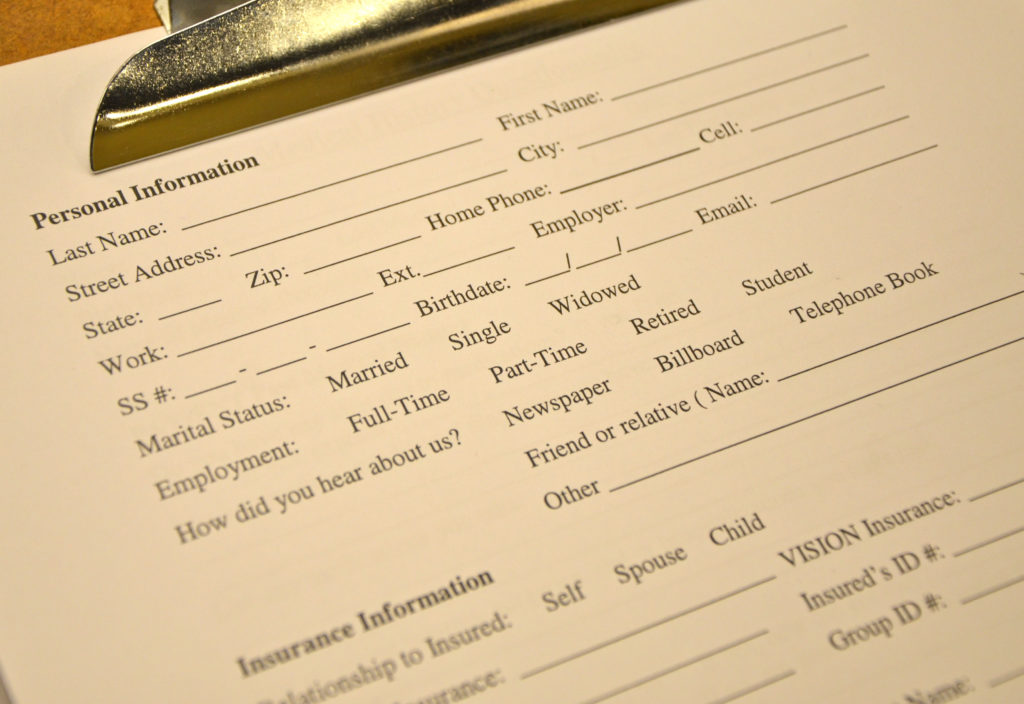By Maria Sampalis, OD
Feb. 8, 2017
The insurance companies, whose panels you serve on, can conduct audits of your practice. Are you ready if the auditor calls, or comes knocking on your door, tomorrow?
Sometimes an audit takes the form of an in-office evaluation, and sometimes the insurance company just asks you to send in your health records.
They do this for two reasons: to make sure you are billing and coding as you should, and to ensure that the care you provide meets their standards. This second type of audit is the one that includes an evaluation of your physical practice (i.e: do you have the equipment you are supposed to have, do you have the proper type of paper towel holders, etc.)
These visits often occur with little notice, and sometimes with no notice. Some insurance companies conduct audits of every practice on their panel every set number of years. For example, VSP conducts an audit of every practice on its panel every three years (unless there is a reason to do so even more frequently). With the chance of an audit always present, my practice, which (fingers crossed) has never been audited, is always prepared for an auditor’s visit.
Being on one panel can account for 10-15 percent of revenues. Take that away, and you’ve made a serious dent in your ability to remain profitable.
A fine for improper billing, or an infraction like having outdated medical supplies, such as eye drops, can be a few thousand dollars, or more. So, it’s worth preparing for a visit, and even heading the visit off in the first place.
There are red flags that can alert an insurance company to your practice. For instance, if you claim 90 percent of your patients are glaucoma suspects, and the practice down the street claims 40 percent are glaucoma suspects, that might precipitate further investigation into your practice.
Advance warning of an auditor’s visit can come in the form of a letter from Medicare, or one of the other insurance panels you are on. If a letter has not arrived beforehand, be sure to check the credentials of the auditor who arrives at your office before sharing any billing and coding files that contain private patient information to avoid a HIPAA violation. You also can verify the person’s identity by calling the insurance company they say they are from, and double-checking that the company sent an auditor to your office.
Conduct Your Own Audits
Every several months, pull files, randomly spot checking to make sure all patient visits and procedures were coded properly. Make sure your documentation of your interpretation and report are included in your records, or you will be financially penalized for missing required records. For example, if doing a visual field, of which you’re interpreting the result for the patient, be sure both the test and your interpretation are coded for.
Your office manager can spot-check coding and billing, but the practice owner should do spot checking, too, because you and the office manager may have different perspectives on which codes are best, and, ultimately, it is the doctor who is responsible for all coding of patient visits.
Correct Common Mistakes
There are mistakes that are easy to make, such as a doctor billing for retinal photography of a normal retina. You cannot bill most third-party payers for a picture of a normal retina even with a diagnosis of a disease like diabetes. Photos are for documenting problems you see. If you can’t see it, then it is not a covered procedure.
Leaving out required information about a patient visit also is a common mistake. For example, you bill for a visual field test, but don’t document why you did it, or don’t record that you did an auto-refraction during a vision exam. Sometimes such documentation depends on whether you are doing a vision exam or an eye exam. For instance, using auto-refraction during a comprehensive medical exam is irrelevant, but it is important to record for a vision exam.
Avoid Under-Billing
It isn’t just over-billing, and incorrect billing, that can alert an insurance company to your practice. Under-coding (i.e. billing a 92012 instead of a 921014) will also raise red flags.
Make Your Office Compliant
In addition to avoiding common coding mistakes, it is important to prepare your physical office environment for a possible auditor visit.
Inspect equipment. Equipment should be clean and up-to-date (calibrated and the calibration documented). Your exam chair(s) should be in good shape, meaning it should be able to fully accommodate patients and exam needs, with no adjustment functionality problems.
Check eye drops, contact lenses and contact lens solution. Make sure no eye drops on your shelves have exceeded their expiration dates. Do the same for all contact lenses and contact lens solutions, including those that come in starter kits you give to patients.
Make license visible. Be sure your optometric license is easily seen, hanging prominently on the wall.
Double-check office safety. You should have a functioning fire extinguisher in an easy-to-find place, and you, and all of your staff members should be able to explain your exit routine, or protocol. You also should have a first aid kit that is easy to find.
Mind HIPAA. Make sure no private patient information is easily visible, including making sure all files are put away, and no computer screens are left unattended with patient information visible, or facing in a direction visible to everyone in the reception area.
An overarching rule-of-thumb is to follow all the requirements of each of the insurance panels you are on. Doing so will keep your practice safe from the very violations auditors are looking for.
 Maria Sampalis OD, practices at Sampalis Eye Care in Warwick RI. She is also the founder of Corporate Optometry on Facebook. Dr. Sampalis is also founder of the new job site corporateoptometrycareers.com, and is available for practice management consulting. To contact: msampalis@hotmail.com
Maria Sampalis OD, practices at Sampalis Eye Care in Warwick RI. She is also the founder of Corporate Optometry on Facebook. Dr. Sampalis is also founder of the new job site corporateoptometrycareers.com, and is available for practice management consulting. To contact: msampalis@hotmail.com























